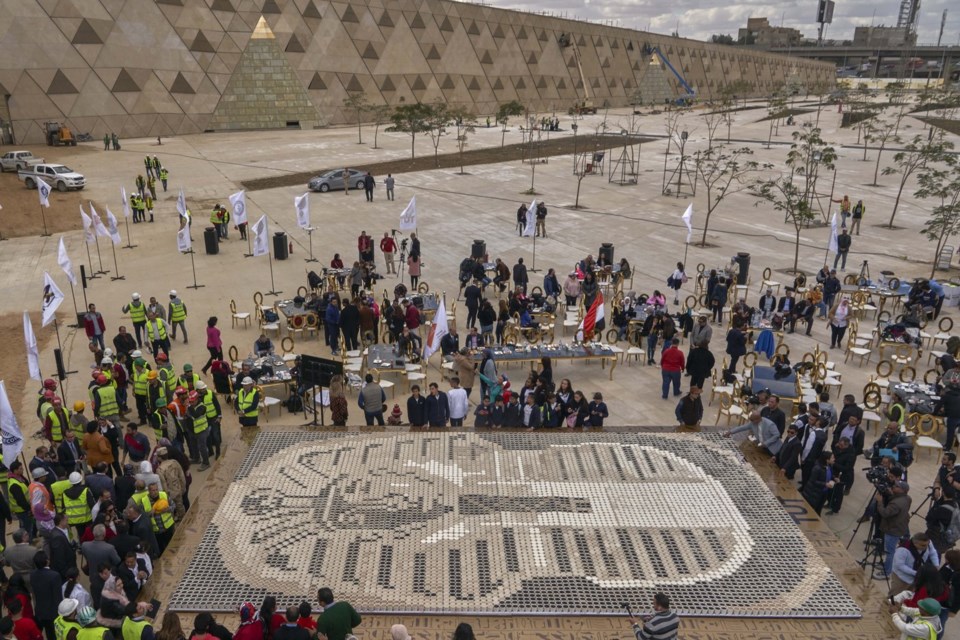CAIRO (AP) — The Grand Egyptian Museum will partially open its main galleries on Wednesday, including 12 halls that exhibit aspects of ancient Egypt, as part of a trial run, officials said Tuesday.
The museum, a mega-project near the famed Giza Pyramids which has cost well over $1 billion so far, will open the halls for 4,000 visitors as a trial run until the official opening date, which is yet to be announced, according to Al-Tayeb Abbas, assistant to the minister of antiquities.
The opening of the museum, which has been under construction for more than a decade, has been repeatedly delayed for various reasons, including the COVID-19 pandemic.
More than 100,000 artifacts of Egypt’s ancient treasures will be displayed in the world’s largest archaeological museum, according to the Egyptian state information website.
Abbas told the AP that the trial run starting Wednesday would help prepare for the full opening by providing a deeper understanding of issues related to operations such as identifying overcrowded areas across the museum.
The displays across the 12 halls tap into issues related to society, religion, and doctrine in ancient Egypt, he added. All open-style halls have been classified by dynasty and historical order, and each will showcase at least 15,000 artifacts.
Eras that will be exhibited in the main galleries include the Third Intermediate Period (about 1070-664 B.C.), Late Period (664-332 B.C.), Graeco-Roman Period (332 B.C.-395 A.D.), New Kingdom (1550-1070 B.C.), Middle Kingdom (2030-1650 B.C.), and Old Kingdom (2649-2130 B.C.). One of the halls displays statues of “Elite of the King,” members of the royal family and high-ranking officials who worked in the army, priesthood, and the government.
Parts of the site have already been open for limited tours since late 2022 to test visitors’ experience and the museum’s operational preparedness.
Aude Porcedde, a Canadian tourist who visited several sections, told the AP she was amazed by the museum, adding that Egyptian civilization is important for her and for the world to know more about.
“There is a lot of history and a lot of things we are not aware of, especially coming from the other side of the world, and seeing everything here and learning from the locals has been great,” said Costa Rican tourist Jorge Licano.
The grand staircase, six stories high and with a view of the pyramids, and the commercial area are open to the public, showcasing monuments and artifacts that include sarcophagi and statues. Other parts of the museum, including the King Tutankhamun treasure collection, are set to open at later dates.
All halls are equipped with advanced technology and feature multimedia presentations to explain the lives of the ancient Egyptians, including its kings, according to Eissa Zidan, Director-General of the Preliminary Restoration and Antiquities Transfer at the museum.
One of the halls will use virtual reality to explain the history of burial and its development throughout ancient Egypt.
“The museum is not only a place to display antiquities, but it also aims to attract children to learn about ancient Egyptian history ... The museum is a gift to all the world,” Zidan told the AP.
-------------------------------------------------------------------------------------------
Associated Press journalist Fatma Khaled contributed to this report from Cairo.
Ahmed Hatem, The Associated Press



